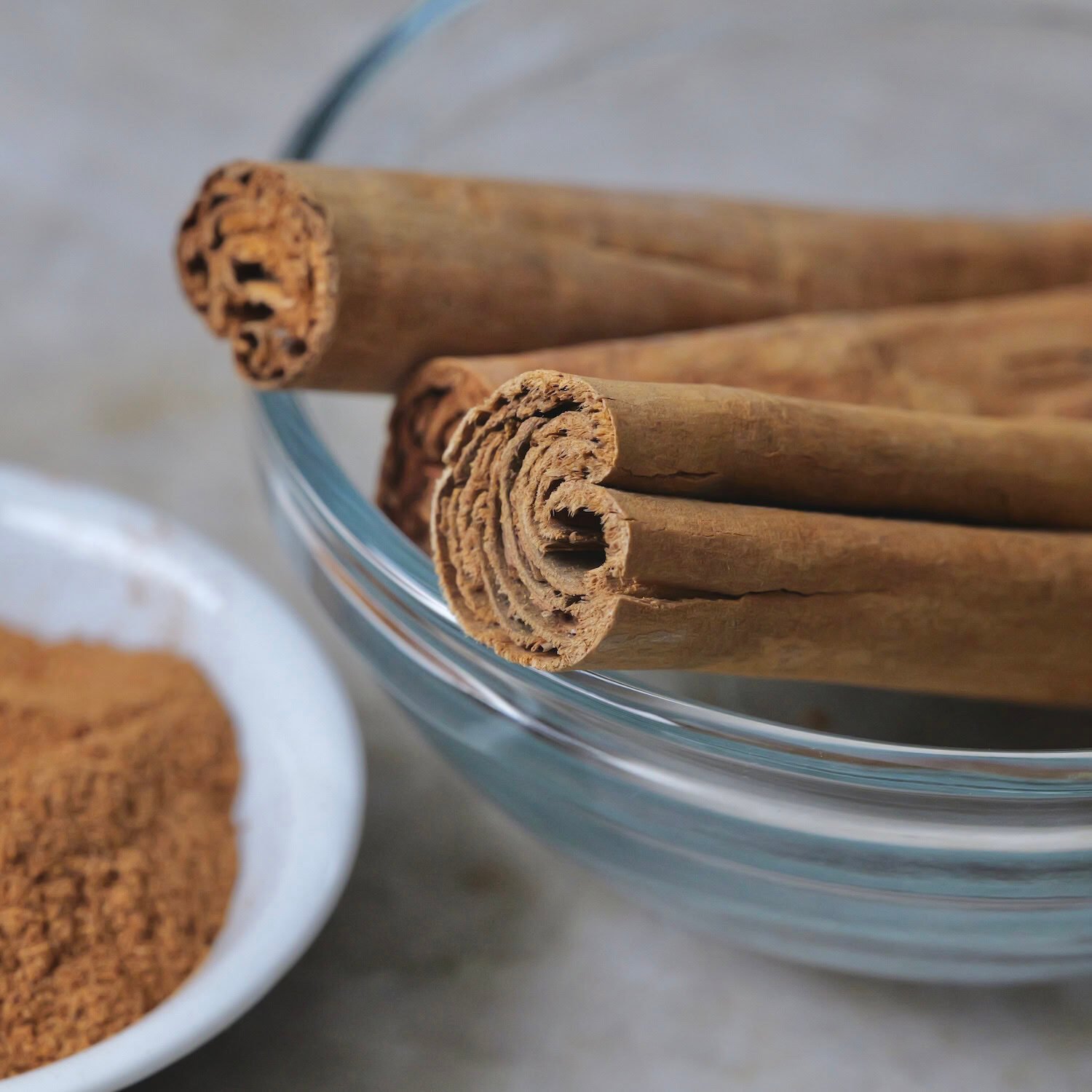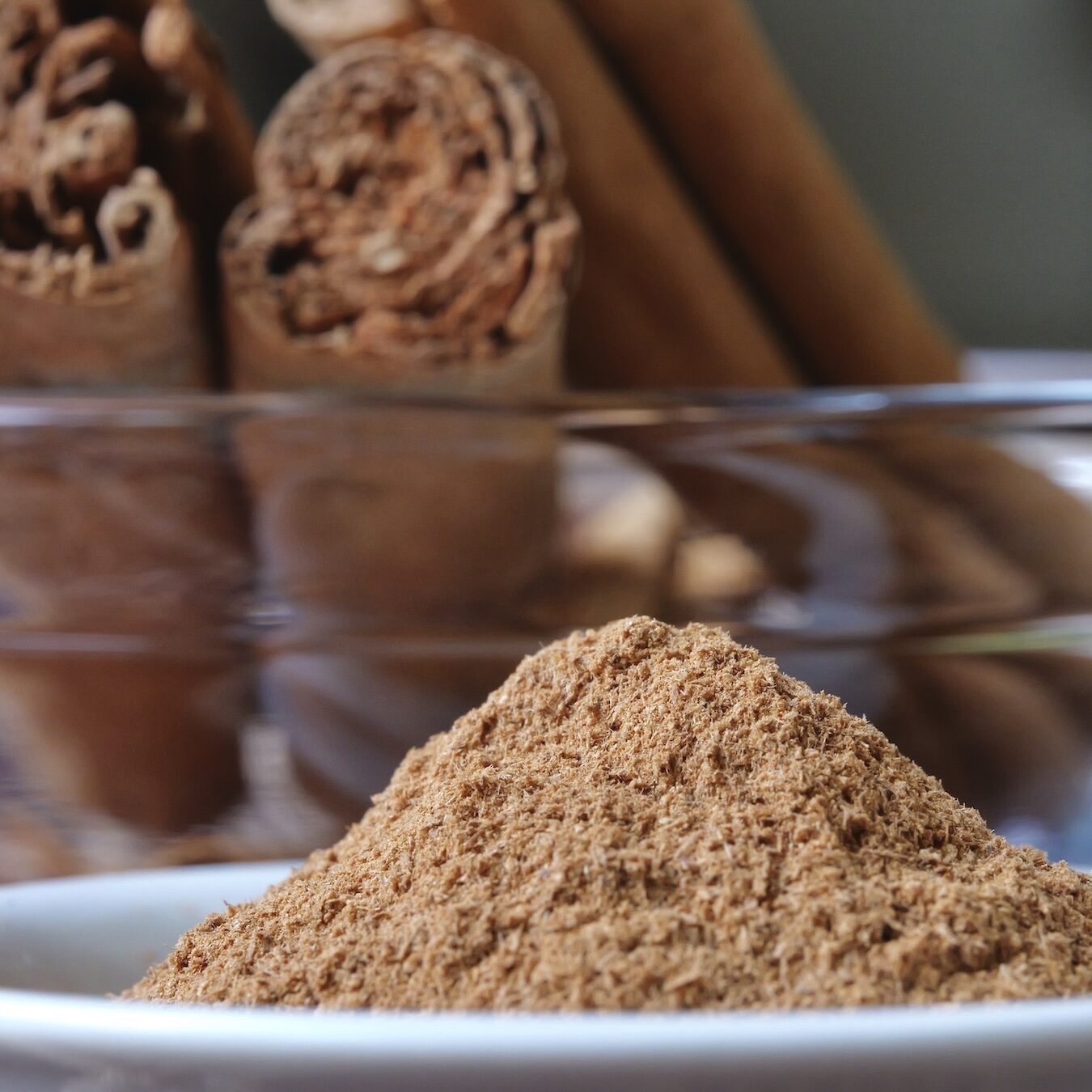Ceylon Cinnamon
Ceylon cinnamon, or true cinnamon, is the spice produced from the inner bark of Cinnamomum verum, a tropical evergreen tree in the laurel family.

REGION OF ORIGIN
Ceylon cinnamon comes from the tropical island of Sri Lanka (formerly Ceylon), off the southeastern coast of India. It has a unique terroir that has nurtured true cinnamon for centuries.
PART & COLOR
Cinnamon is made from the inner bark of the tree. When dried, the bark curls into warm, golden brown quills. Unlike cassia cinnamon, which is thick, hard, and hollow, true cinnamon sticks are thin, brittle, and filled with additional layers of aromatic bark. Ceylon cinnamon leaves can be used in teas as well as to infuse flavor like bay leaves or curry leaves.
HARVEST
The Ceylon cinnamon tree matures and starts producing suitable bark after 2 years, with peak production between 4-10 years. While Ceylon tree bark can be harvested year-round, it is easiest during the rainy season since the bark is easier to peel. In Sri Lanka, the peak harvests are in May and November—aligned to the island's monsoon seasons. Harvest involves cutting young shoots and carefully stripping the inner bark, which is then rolled into quills and left to dry for 4 to 5 days.

FLAVOR & AROMA PROFILE
It is called true cinnamon for good reason. More delicate, complex, and sweeter than its harsher and more pungent cassia cousins, cinnamon from Ceylon is the definitive way to experience the Cinnamomum spice. Evoking memories of freshly baked pastries and cozy winter evenings, true cinnamon carries notes of vanilla, citrus, and brown sugar, accompanied by a subtle spiciness. It is a complex and comforting aroma.
On the palate, Ceylon cinnamon delivers a gentle warmth that slowly unfolds into a smooth, honey-like sweetness that is a bit tangy with woody undertones. It has a depth and sophistication that brings a memorable elegance to a dish. Pre-ground powders often include a mix of different types of cinnamon, including cassia, and may contain fillers or additives. Its quality also degrades more quickly, especially if not stored properly, as the volatile oils dissipate over time. Therefore, to understand what cinnamon really is, get some whole Ceylon sticks, break them into smaller pieces, and freshly grind them in a mortar and pestle or spice grinder. The result is a full flavor and aroma profile that is so worth the extra effort.
CULINARY USES
Ceylon cinnamon’s exotic, sweet warmth is a perfect match for baked goods like pies, cakes, cookies, and breads as well as creamy desserts like custards and puddings. It also pairs beautifully with apples, pears, and other fruits, enhancing their natural sweetness. Ceylon cinnamon works with savory dishes too, particularly in Middle Eastern and Indian cuisines. It can season meats like lamb and chicken, but also baked vegetables like butternut squash or sweet potatoes. A simple sprinkle on top of sautéed green beans may broaden your perspective on the many possibilities true cinnamon offers vegetable dishes.
Spanish sausages and meats are often cured with cinnamon and Moroccan tagines enjoy its company as well. In Mexico, Ceylon cinnamon can be found in recipes with yams, chocolates, and mole sauces. However, this spice is perhaps most appreciated in simple warm drinks like coffee and hot chocolate. So whether you're baking an apple pie, simmering a fragrant curry, or sipping a warm cup of spiced tea, Ceylon cinnamon shines with every use. It can be used in whole quills for long, slow cooking or ground into a fine powder for a finishing touch.



